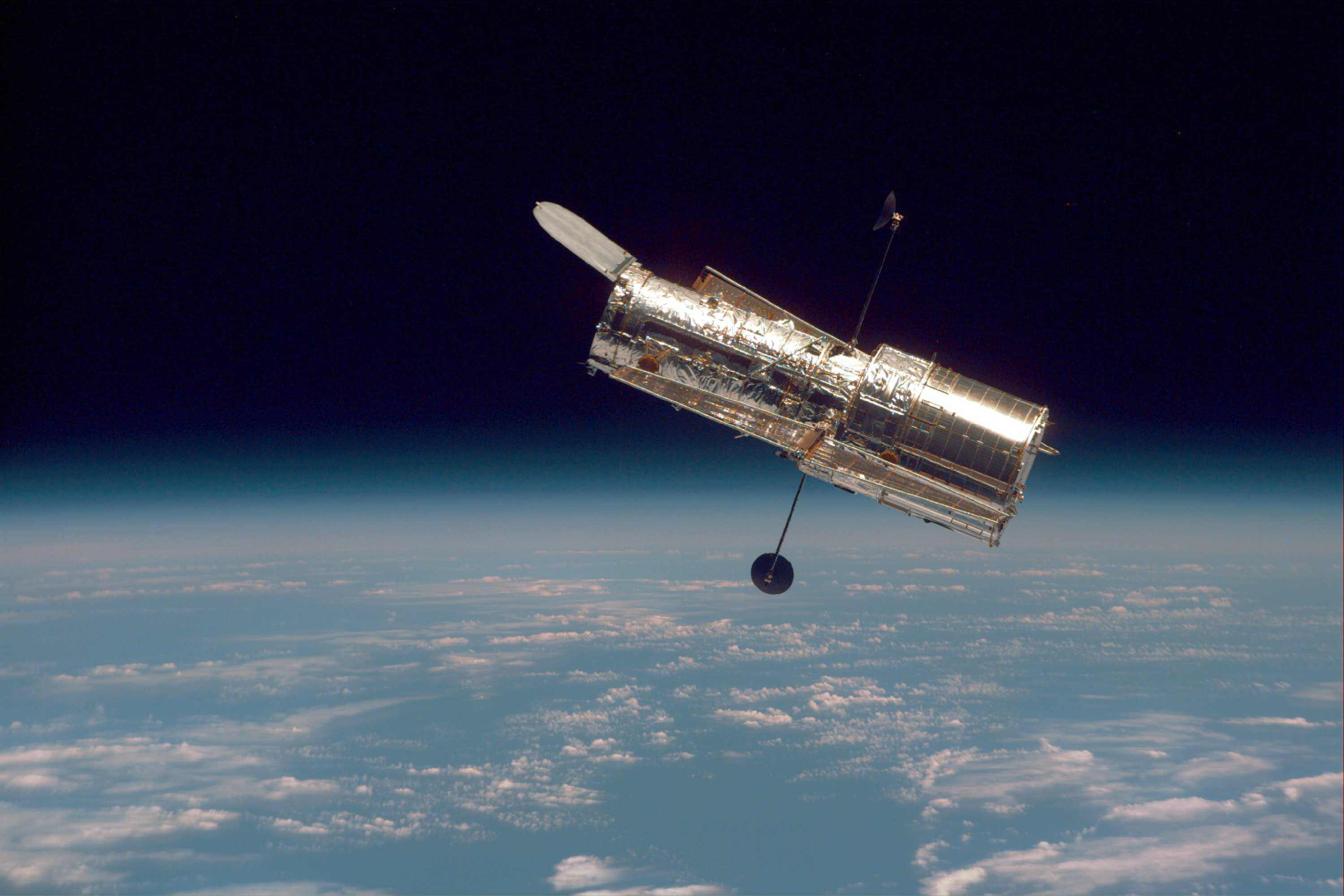Update: Hubble took its first picture since it went into safe mode on June 13th! More info here.
On Sunday, June 13th, the Hubble Space Telescope gave the astronomical community a fright when its payload computer suddenly stopped working. This prompted the main computer to put the telescope and its scientific instruments into safe mode. What followed was many tense weeks as the operations team for the HST tried to figure out what the source of the problem was and come up with a strategy for turning Hubble back on.
On Friday, July 17th, after more than a month of checking, re-checking, and attempted restarts, the operations team for Hubble identified the root of the problem and restored power to the telescope’s hardware and all of its instruments. Science operations can now resume, and the pioneering space telescope that gave us over thirty years of dedicated astronomy, cosmology, and astrophysics, still has some life in her!
The problems began when an unspecified issue caused Hubble’s payload computer, a NASA Standard Spacecraft Computer-1 (NSSC-1) system, to stop working. As part of the telescope’s Science Instrument Command and Data Handling (SI C&DH) module, the purpose of this computer is to control and coordinate the scientific instruments aboard the spacecraft.

As a result, the main computer stopped receiving the “keep-alive” signal from the payload computer and automatically placed all of Hubble‘s scientific instruments into a safe mode. A day later, the Hubble operations team restarted the payload computer, but it halted again. That’s when the operations team began investigating different SI C&DH components and attempting to switch over to backup modules.
These included the possibility of a degraded memory core, an issue with Standard Interface (STINT) hardware, the Central Processing Module (CPM), the Command Unit/Science Data Formatter (CU/SDF), and a regulator within the Power Control Unit (PCU). At the same time, the team made multiple attempts to restart and reconfigure the computer and the backup computer, but without success.
However, by July 14th, the operations team announced that these tests allowed them to gather vital information that indicated the cause of the problem was in the PCU. This unit ensures a steady voltage supply to the payload computer and its memory. It also contains a power regulator that maintains a constant supply of five volts and a secondary protection circuit that warns the payload computer if the voltage exceeds or falls below this level.
This will trip the secondary protection circuit, which will then instruct the payload computer to cease operations. The team’s analysis suggested that either the secondary circuit was tripped, or that degradation over time caused it to get stuck in this inhibit state. On July 15th, the team then began the process of switching over to the SI C&DH units backup, which also contains the backup PCU.

The team also switched other pieces of hardware over to their alternate interfaces to connect to the backup SI C&DH. Once that was done, the backup payload computer was turned on, loaded with flight software, and brought up to normal operations mode. By July 17th, Hubble’s scientific instruments were returned to operational status and NASA announced that the collection of science data will now resume.
This news comes as a welcome relief to NASA and the countless millions that hold the Hubble Space Telescope in such high regard. As NASA Administrator Bill Nelson said in a recent NASA press statement:
“Hubble is an icon, giving us incredible insight into the cosmos over the past three decades. I’m proud of the Hubble team, from current members to Hubble alumni who stepped in to lend their support and expertise. Thanks to their dedication and thoughtful work, Hubble will continue to build on its 31-year legacy, broadening our horizons with its view of the universe.”
This procedure is similar to what happened in 2008 when Hubble‘s previous CU/SDF module (another part of the SI C&DH) failed and the operations team switched over to the backup module to keep science operations going. The final servicing mission (STS-125) followed in May of 2009, where the crew of the Space Shuttle Atlantis rendezvoused with Hubble in orbit and replaced the faulty SI C&DH unit with the one currently in use.

For anyone whose formative years coincided with the 1990s, the name Hubble has been synonymous with astronomy and scientific discovery. In the thirty-one years that it has been in operation, Hubble has conducted over 1.5 million observations of the universe, over 18,000 scientific papers have been published with its data, and it has contributed to some of the most significant discoveries of our Universe.
These include observations that proved the Universe is expanding at an accelerating rate, which gave to the theory of Dark Energy. Its observation campaigns, like the Deep Field and Ultra Deep Field, provided new insight into the evolution of galaxies and hints about the role Dark Matter played. Its observations of exoplanets have also led to the first atmospheric studies of planets beyond the Solar System.
It’s good to know that after 31 years and so many scientific breakthroughs under her belt that Hubble, the workhorse and pioneer of space telescopes, still has some life left in her. Nancy Grace Roman would be proud of her child!
Further Reading: NASA

